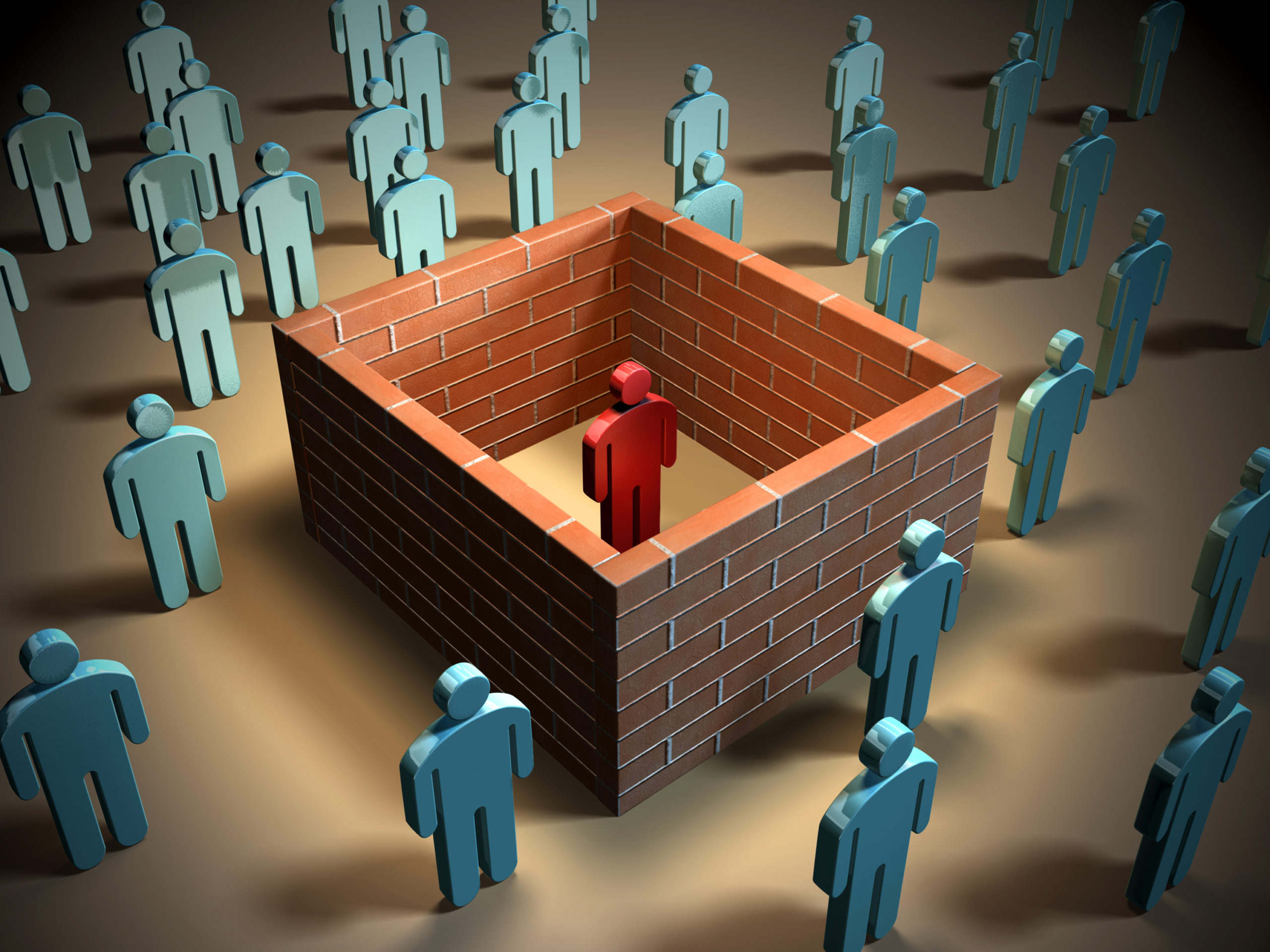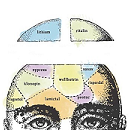Stigma – whether perceived or internalized – affects the lives of most people diagnosed with a mental disorder. Promulgating a continuum model of mental health and mental illness has been proposed as a way to reduce stigma by decreasing notions of difference.
In a new study, researchers analyzed 13 studies on the relationship between “mental illness stigma” and “continuum beliefs”– beliefs that there is a continuum between health and illness, as opposed to a discrete mental health/mental illness binary–to see if such beliefs lessen the stigma associated with mental health challenges.

Mental illness stigma is harmful and pervasive. Depression, for example, is still seen by many as a character defect. Stigma can increase distress and prevent people from getting the help they need during a mental health crisis. While mindfulness may help manage the subjective experience of stigma, social perceptions of stigma nevertheless increase the likelihood of discrimination and socioeconomic disadvantage for persons with mental health diagnoses and can lead to inaction even from practicing clinical psychologists.
This study tests the hypothesis that the process of mental illness stigmatization is closely linked to a categorical distinction between mental health and mental illness. On this binary or categorical view, people perceive the experience of mental illness to be fundamentally different from normal experiences and behavior.
As described above, the stigmatization associated with the categorical view increases symptom burden, poses a barrier to help-seeking, and fosters treatment avoidance in people suffering from mental health challenges. Continuum beliefs, on the other hand, assumes one dimension from severe psychiatric symptoms to subclinical, light, or non-existent symptoms.
“Since every person is likely experiencing symptoms of mental illness at some points during their life, a person with mental illness might be seen as someone with similar, but more severe experiences, thus remaining ‘someone like us,’” the authors explain.
“Continuum beliefs are framing how people perceive mental illness in general, [and] they imply that someone’s mental illness is not categorically distinct from normal behavior but falls on a continuum of life experiences.”
If categorical beliefs indeed play a central role in the stigmatization process, continuum beliefs might counter stigma at the conceptual level.
To test this hypothesis, the authors performed a systematic review and meta-analysis of correlation and intervention studies to discern whether continuum beliefs are in fact associated with less stigma and whether such beliefs could be used to de-stigmatize mental illness. They analyzed seven cross-sectional and six intervention studies and included two qualitative studies. On how continuum beliefs might reduce the social distance between people affected by mental illness, one interviewee explained:
“This idea [understanding human experience as a continuum] challenges the border between what’s normal and abnormal by emphasizing that the difference is based on degrees, not absolute differences.”
The researchers found that continuum beliefs are generally associated with a lower desire for social distance, lower perception of dangerousness and unpredictability, and less fear and more pro-social reactions to persons experiencing mental health challenges. Associations between continuum beliefs and stigma were similar for all types of disorders.
In some studies, continuum beliefs were elicited by establishing a personal connection between the respondent and the character described in a vignette. By suggesting a similarity between ‘us’ and ‘them,’ these studies found the respondent’s willingness to accept the depicted person as one of ‘us’ was generally correlated with the presence of continuum beliefs.
As the authors note, “personally relating respondents to a continuum, rather than informing them on the concept, could be crucial to using continuum messages for de-stigmatization.” In other words, allowing people to discover themselves and others on a continuum through narrative and dialogue could be more effective than overt anti-stigma messaging.
Overall, the meta-analysis revealed that continuum beliefs could benefit anti-stigma campaigns and interventions, with positive health-related outcomes. Such beliefs, the authors conclude, “might be able to provide an inclusive and promising foundation for other intervention messages” and thus constitute a crucial tool for future study on the de-stigmatization of people experiencing mental distress.
****
Peter, L-J., et al. (2021). “Continuum beliefs and mental illness stigma: a systematic review and meta-analysis of correlation and intervention studies.” Psychological Medicine 1-11. DOI:10.1017/S0033291721000854 (Link)















Actually there is no stigma that really has any social meaning for the individual.
There is however persecution and that happens in the shrink’s office. He is the one to brand the person as defective in the first place.
Like a sinner or criminal.
He then likes to pretend that the public out there are the ones guilty of seeing or treating the person as defective.
The ONLY places this so called stigma will ever really count is in exactly the same social services that deliver the labels.
The label IS the branding.
Imagine if we did this to the diversity of physical attributes, capabilities.
Psychiatry helps to disable a huge part of the population. It is a business, not healthcare.
Report comment
Viewing Mental Differences on a Continuum 1 Reduces 2 Stigma
You have set an interesting linguistic trap:
1. “Reduces” means to hold onto some.
2. Accepting a stigma means to accommodate those taught and teaching it.
Neither makes ethical or moral sense. Nor is there is any historical model for such an approach. No one advocated “reducing” the stigma of rape, and following WW II no one advocated “reducing” the stigma of Jews. We rejected both.
Harold A Maio, retired mental health editor
Report comment
Thankyou for a wise article. I found it engrossing to read. I am on a journey just now so won’t elaborate.
Report comment
This appears to be a very complex way of saying that DSM “disorders” are nonsense and cause great harm to people in general by making it appear that there is a black and white answer to the question “am I ‘mentally ill?'”
Report comment
As a psychosis survivor who never underwent medical treatment I have experienced exactly how the right people would never say to me that my experiences were pathological. These people have been instrumental in my recovery.
Report comment
Sometimes, I think stigma or stigmatization has contributed to a lesser amount of people adversely affected by the “psych industry” We must be very careful to place a concept like stigma or stigmatization on some sort of continuum. We think we can get away with abusing ourselves and each other by categorizing into a “status continuum.” I would say “wrong answer.” Neurodiversity continuums, Bipolar continuums, etc. etc. etc. Continuums just label and segregate people further. Forget it please. We do not need something reduced that only seeks to promulgate the “myth of mental illness” further. We need to tell people they are whole and good just the way they are; without lying to them that they are inherently defective. Sin notwithstanding, how can some one be defective when they are uniquely by a Creator greater than any human being or creature or plant on this planet Earth. Thank you
Report comment
Every single human will develop psychosis under the right conditions. Viewing “mental differences” as a continuum still places some in the bucket of normal and some in the bucket of sick. What we need is to see normal as a continuum.
What I mean is, it is NORMAL for some people to be very high energy, it is NORMAL for some people to be mostly cheerful and easygoing, it is NORMAL for some people to have sensory issues, it is NORMAL for some people to be introverted, it is NORMAL for some folks to be moody, it is NORMAL for some folks to be sensitive. It is NORMAL for some people to have less energy.
It is the continuum of NORMAL that needs to change, not the continuum of abnormal. Everyone has a place in a functioning society/culture/tribe. Everyone has strengths and weaknesses. We NEED risk takers. We NEED cautious types. When we learn to VALUE traits instead of pathologizing them then we will be better positioned to address actual illness when it arises. We can’t expect all people to fit in the same bucket. Someone meant to be a firefighter is going to be miserable in a garment factory. Someone else meant to be a farmer isn’t going to be happy working in a cubicle farm.
We need a version of What Color Is Your Parachute for kids entering education so we can help better determine their strengths and ways of learning and stop diverting the “bad” kids to psychiatry or the justice system.
We CAN change the way we approach living, learning and working. But it will be a community effort and only happen when enough people say enough is enough.
We don’t need to feel better about not fitting into the expectations we’ve been placed under. We need to change the expectations!
Report comment
Wow, great essay! I love every word! “Continuum of normal” – I’m going to use that one!
Report comment